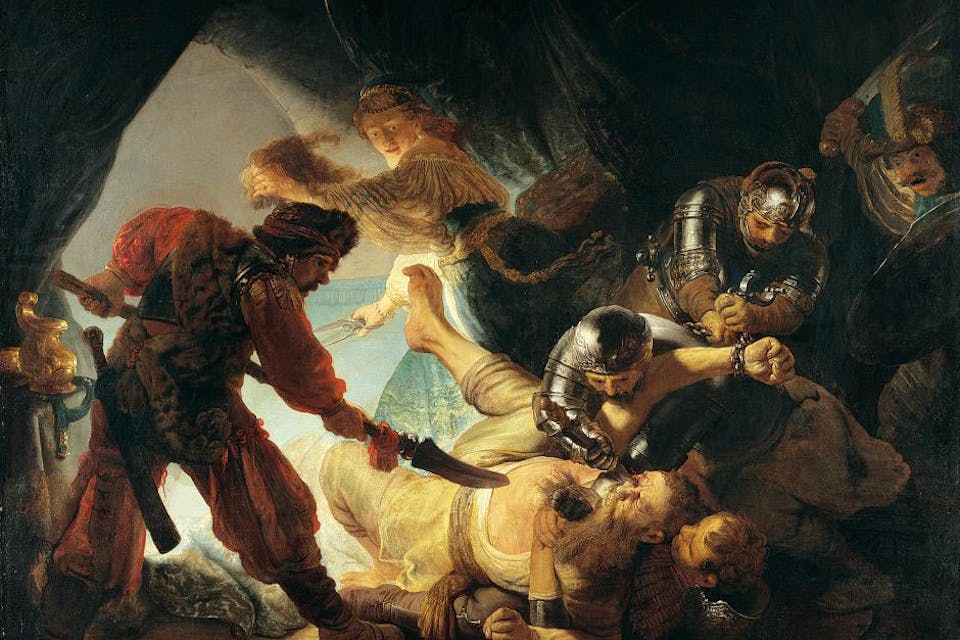
May 25, 2018
Rembrandt and the Dangers of Vision
To perceive without seeing, and to utilize sight to sharpen rather than to detract from insight, is an essential Jewish task. This is the challenge that Rembrandt allows us to glimpse.
In his many rendering of scenes from the Hebrew Bible, Rembrandt van Rijn—the first great Western master actually to have lived among Jews—made artistic choices notably different from those of his mainly Catholic predecessors. Whether those choices can be ascribed to Rembrandt’s interaction with practicing Jews, to the 17th-century Dutch Protestant interest in Judaism in general, or to Rembrandt’s own careful reading of the biblical text is a fascinating question in itself. But of no less interest is what his visual renderings of the biblical story contribute by way of further understanding of the Bible’s own larger meanings.
A good example is Rembrandt’s 1636 portrayal of the tragic end of the Israelite hero Samson, whose full story is told in the book of Judges (13:1-16:31) and the circumstances of whose birth are recounted in the haftarah for this week’s parashah of Naso (Numbers 4:21-7:89).
In The Blinding of Samson, the Israelite hero’s writhing body, one leg extended in the air, offers an almost perfect parallel to, and is clearly modeled on, Prometheus Bound (1618), a painting by Peter Paul Rubens of the Greek hero chained to a rock and twisting in agony as an eagle gouges out his entrails. Rembrandt presents a similar scene in order to tell a very different story. Rubens’ Prometheus is being remorselessly punished for having stolen the fire of the gods. Samson, endowed with Herculean strength, might indeed be thought of as the biblical figure most closely approximating a Greek hero, but his story remains, in the end, a morality tale: he is a man who has brought about his own undoing. Rembrandt’s close modeling of Samson on Rubens’ Prometheus thus highlights not only a similarity but a contrast: a distinction between the Hebraic and the classical worlds that Rembrandt understood all too well.